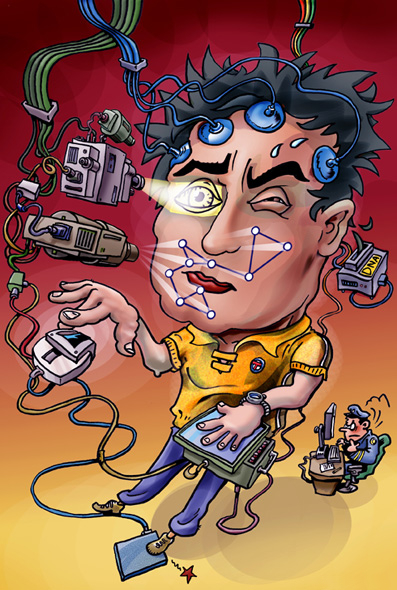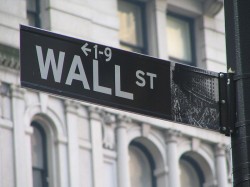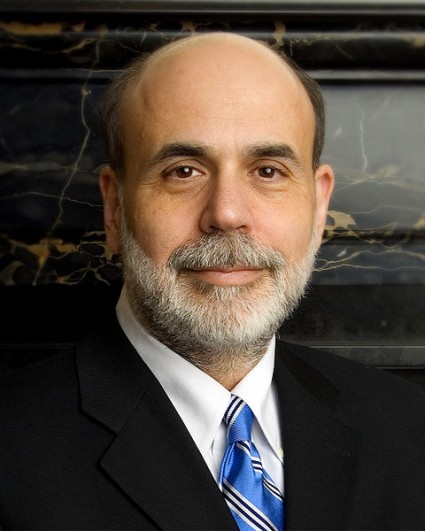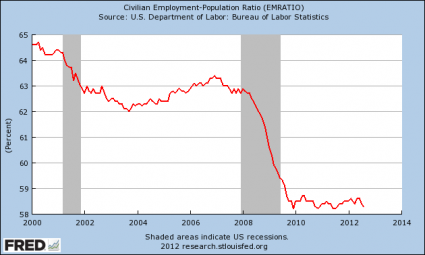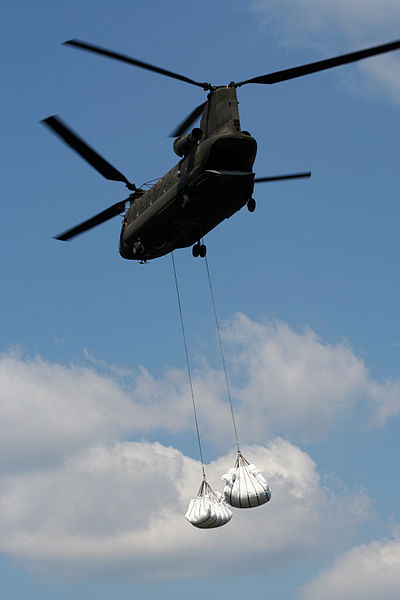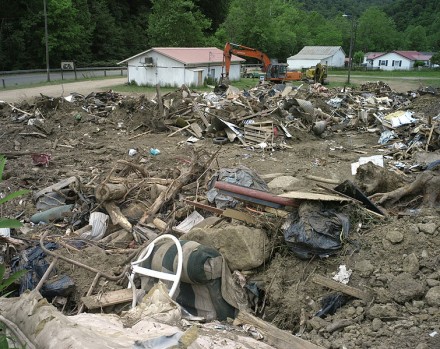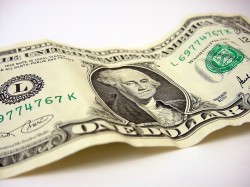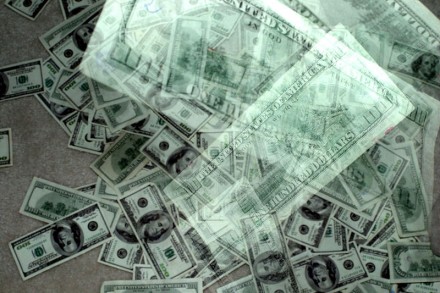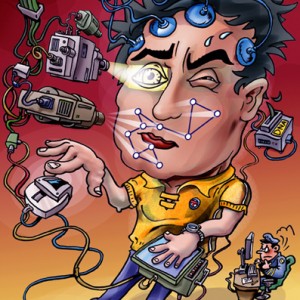 Can you imagine a world where your home, your vehicles, your appliances and every single electronic device that you own is constantly connected to the Internet? This is not some grand vision that is being planned for some day in the future. This is something that is being systematically implemented right now. In 2015, we already have “smart homes”, vehicles that talk to one another, refrigerators that are connected to the Internet, and televisions that spy on us. Our world is becoming increasingly interconnected, and that opens up some wonderful possibilities. But there is also a downside. What if we rapidly reach a point where one must be connected to the Internet in order to function in society? Will there come a day when we can’t even do basic things such as buy, sell, get a job or open a bank account without it? And what about the potential for government abuse? Could an “Internet of Things” create a dystopian nightmare where everyone and everything will be constantly monitored and tracked by the government? That is something to think about.
Can you imagine a world where your home, your vehicles, your appliances and every single electronic device that you own is constantly connected to the Internet? This is not some grand vision that is being planned for some day in the future. This is something that is being systematically implemented right now. In 2015, we already have “smart homes”, vehicles that talk to one another, refrigerators that are connected to the Internet, and televisions that spy on us. Our world is becoming increasingly interconnected, and that opens up some wonderful possibilities. But there is also a downside. What if we rapidly reach a point where one must be connected to the Internet in order to function in society? Will there come a day when we can’t even do basic things such as buy, sell, get a job or open a bank account without it? And what about the potential for government abuse? Could an “Internet of Things” create a dystopian nightmare where everyone and everything will be constantly monitored and tracked by the government? That is something to think about.
Today, the Internet has become such an integral part of our lives that it is hard to remember how we ever survived without it. And with each passing year, the number of devices connected to the Internet continues to grow at an exponential rate. If you have never heard of the “Internet of Things” before, here is a little bit about it from Wikipedia…
Things, in the IoT, can refer to a wide variety of devices such as heart monitoring implants, biochip transponders on farm animals, electric clams in coastal waters, automobiles with built-in sensors, or field operation devices that assist fire-fighters in search and rescue. These devices collect useful data with the help of various existing technologies and then autonomously flow the data between other devices. Current market examples include smart thermostat systems and washer/dryers that utilize wifi for remote monitoring.
But there is also a dark side to the Internet of Things. Security is a huge issue, and when that security is compromised the consequences can be absolutely horrifying. Just consider the following example…
It is a strange series of events that link two Armenian software engineers; a Shenzen, China-based webcam company; two sets of new parents in the U.S.; and an unknown creep who likes to hack baby monitors to yell obscenities at children. “Wake up, you little ****,” the hacker screamed at the top of his digital lungs last summer when a two-year-old in Houston wouldn’t stir; she happened to be deaf. A year later, a baby monitor hacker struck again yelling obscenities at a 10-month-old in Ohio.
Both families were using an Internet-connected baby monitor made by China-based Foscam. The hacker took advantage of a weakness in the camera’s software design that U.S.-based Armenian computer engineers revealed at a security conference in Amsterdam last April.
The Internet allows us to reach into the outside world from inside our homes, but it also allows the reverse to take place as well.
Do we really want to make ourselves that vulnerable?
Sadly, we live at a time when people don’t really stop to consider the downside to our exploding technological capabilities.
In fact, there are many people that are extremely eager to connect themselves to the Internet of Things.
In Sweden, there are dozens of people that have willingly had microchips implanted under the skin. They call themselves “bio-hackers”, and they embrace what they see as the coming merger between humanity and technology. The following is what one of the founders of a Sweden based bio-hacking community had to say during one recent interview…
“The technology is already happening,” says Hannes Sjoblad, one of the founders of BioNyfiken. “We are seeing a fast-growing community of people experimenting with chip implants, which allow users to quickly and easily perform a variety of everyday tasks, such as allowing access to buildings, unlocking personal devices without PIN codes and enabling read access to various types of stored data.
“I consider the take-off of this technology as another important interface-moment in the history of human-computer interaction, similar to the launches of the first windows desktop or the first touch screen. Identification by touch is innate for humans. PIN codes and passwords are not natural. And every additional device that we have to carry around to identify ourselves, be it a key fob or a swipe card, is just another item that clutters our lives.”
And of course this is happening in the United States as well…
In America, a dedicated amateur community — the “biohackers” or “grinders” — has been experimenting with implantable technology for several years. Amal Graafstra, a 38-year-old programmer and self-styled “adventure technologist”, has been inserting various types of radio-frequency identification (RFID) chips into the soft flesh between his thumbs and index fingers since 2005. The chips can be read by scanners that Graafstra has installed on the doors of his house, and also on his laptop, which gives him access with a swipe of his hand without the need for keys or passwords.
But you don’t have to have a microchip implant in order to be a part of the Internet of Things.
In fact, there are a whole host of “wearable technologies” that are currently being developed for our society.
For instance, have you heard about “OnStar for the Body” yet? It will enable medical personnel to constantly monitor your health wherever you are…
Smart, cheaper and point-of-care sensors, such as those being developed for the Nokia Sensing XCHALLENGE, will further enable the ‘Digital Checkup’ from anywhere. The world of ‘Quantified Self’ and ‘Quantified Health’ will lead to a new generation of wearable technologies partnered with Artificial Intelligence that will help decipher and make this information actionable.
And this ‘actionability’ is key. We hear the term Big Data used in various contexts; when applied to health information it will likely be the smart integration of massive data sets from the ‘Internet of things’ with the small data about your activity, mood, and other information. When properly filtered, this data set can give insights on a macro level – population health – and micro – ‘OnStar for the Body‘ with a personalized ‘check engine light’ to help identify individual problems before they further develop into expensive, difficult-to-treat or fatal conditions.
If that sounded creepy to you, this next item will probably blow you away.
According to one survey, approximately one-fourth of all professionals in the 18 to 50-year-old age bracket would like to directly connect their brains to the Internet…
According to a survey by tech giant Cisco Systems, about a fourth of professionals ages 18 to 50 would leap at the chance to get a surgical brain implant that allowed them to instantly link their thoughts to the Internet.
The study was conducted on 3,700 adults working in white-collar jobs in 15 countries.
“Assuming a company invented a brain implant that made the World Wide Web instantly accessible to their thoughts, roughly one-quarter would move forward with the operation,” the study found.
In the end, they are not going to have to force most of us to get connected to the Internet of Things.
Most of us will do it eagerly.
But most people will never even stop to consider the potential for abuse.
An Internet of Things could potentially give governments all over the world the ability to continually monitor and track the activities of everyone under their power all of the time.
If you do not think that this could ever happen, perhaps you should consider the words of former CIA director David Petraeus…
“Items of interest will be located, identified, monitored, and remotely controlled through technologies such as radio-frequency identification, sensor networks, tiny embedded servers, and energy harvesters — all connected to the next-generation Internet using abundant, low-cost, and high-power computing”
Are you starting to get the picture?
They plan to use the Internet of Things to spy on all of us.
But we just can’t help ourselves. Our society has a love affair with new technology. And some of the things that are being developed right now are beyond what most of us ever dreamed was possible.
For example, Microsoft has just released a new promotional video featuring 3D holograms, smart surfaces, next-generation wearable technologies, and “fluid mobility”…
The elaborate, highly produced video shows jaw-dropping technologies like a SCUBA mask that annotates the sea with 3D holograms, a multipart bracelet that joins together to become a communications device, and interactive, flexible displays that automatically “rehydrate” with information specific to the people using them.
This video from Microsoft was posted on YouTube, and I have shared it below…
So what do you think about all of this?
Please feel free to add to the discussion by posting a comment below…
